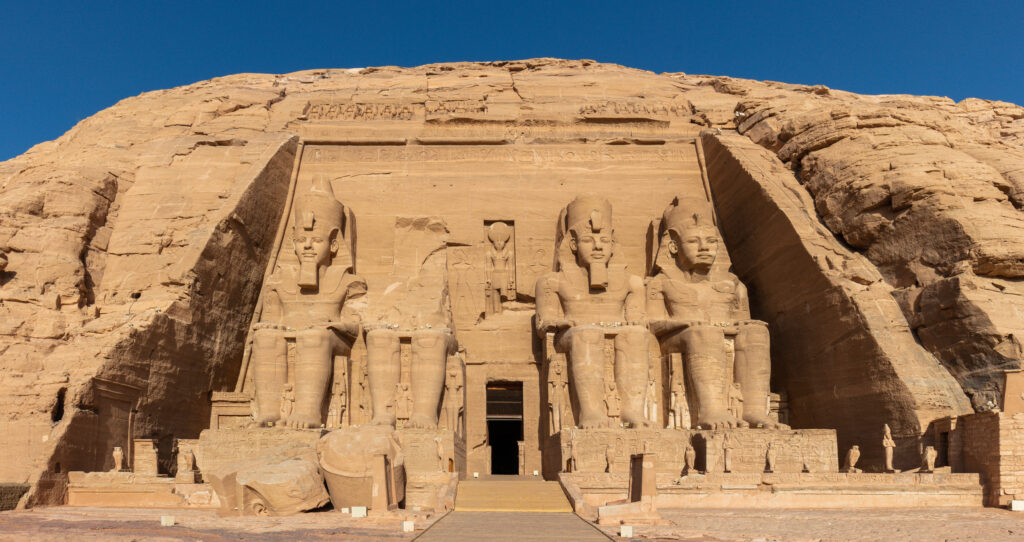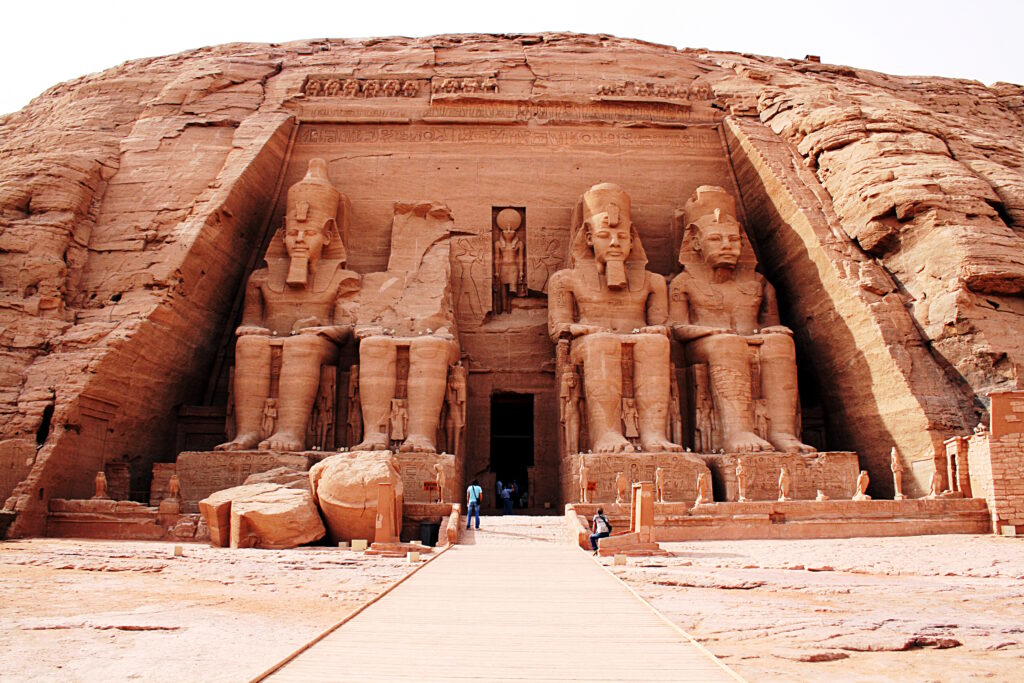Abu Simbel: Ancient Marvel on the Banks of the Nile

Abu Simbel is an awe-inspiring archaeological site located in southern Egypt, along the banks of the iconic Nile River. This extraordinary complex houses two massive rock temples, carved into the cliffs during the reign of Pharaoh Ramesses II in the 13th century BCE. The temples are renowned for their grandeur, historical significance, and architectural marvels, attracting visitors from around the world.
The construction of the Abu Simbel temples was commissioned by Pharaoh Ramesses II, who ruled during the New Kingdom period of ancient Egypt. The purpose of these temples was twofold: to commemorate the pharaoh’s reign and to demonstrate his military prowess. Additionally, the temples were dedicated to the gods Amun, Ra-Horakhty, and Ptah.
The Great Temple of Abu Simbel, also known as the Temple of Ramesses II, is the larger of the two structures. Its facade is adorned with four colossal statues of Ramesses II, each standing at approximately 20 meters (66 feet) in height. These imposing figures, with their serene expressions, greet visitors as they approach the temple. The intricate carvings on the facade depict scenes from the pharaoh’s military campaigns and religious rituals, showcasing the prowess and piety of Ramesses II.
Inside the Great Temple, a series of vast halls and chambers lead to the innermost sanctuary, housing statues of the gods to whom the temple is dedicated. One of the most remarkable features of the Great Temple is its carefully engineered alignment, which allows the sun to penetrate its inner sanctum twice a year during the biannual solar phenomenon known as the “Sun Festival.” This spectacle draws crowds of tourists and scholars alike, eager to witness the impressive architectural ingenuity of the ancient Egyptians.
The smaller temple, often referred to as the Temple of Hathor or the Temple of Nefertari, was dedicated to Ramesses II’s beloved wife, Queen Nefertari. The facade of this temple features six statues: four depicting Ramesses II and two portraying Nefertari. The carvings on the walls of the inner chambers celebrate the divine status of the royal couple and their devotion to the goddess Hathor.
In the 1960s, the Abu Simbel temples faced the threat of submersion due to the construction of the Aswan High Dam. In a remarkable international effort, UNESCO led the relocation of the temples to higher ground to preserve these invaluable treasures. The temples were painstakingly dismantled, moved, and reassembled on an artificial hill, ensuring their preservation for generations to come.
Today, visiting the Abu Simbel temples is a profound experience that offers a glimpse into the ancient world and the exceptional achievements of the Egyptian civilization. The intricate details of the carvings, the imposing statues, and the sheer scale of the temples leave visitors in awe of the engineering prowess and artistic mastery of ancient Egypt.
To reach Abu Simbel, travelers must embark on a journey to the remote region of Nubia, near the border with Sudan. The effort is rewarded with an encounter with history, culture, and a tangible connection to the past. The site’s historical and architectural significance has earned it recognition as a UNESCO World Heritage Site, further solidifying its status as a global treasure.
Abu Simbel remains an emblem of the splendor and opulence of ancient Egypt, a testament to the greatness of its pharaohs and the reverence for their gods. Its enduring legacy continues to inspire and captivate visitors, inviting them to contemplate the majesty of the past and the ingenuity of human achievement.
As a timeless symbol of Egypt’s rich history, the Abu Simbel temples stand as a reminder of the profound impact of ancient civilizations and the importance of preserving our shared heritage. For travelers seeking to immerse themselves in the marvels of the past and explore the wonders of the world, Abu Simbel beckons as a destination not to be missed.

Be the first to comment